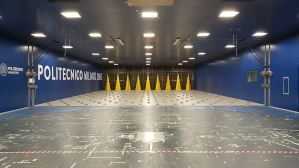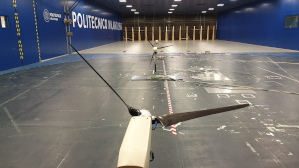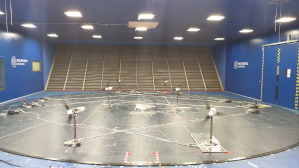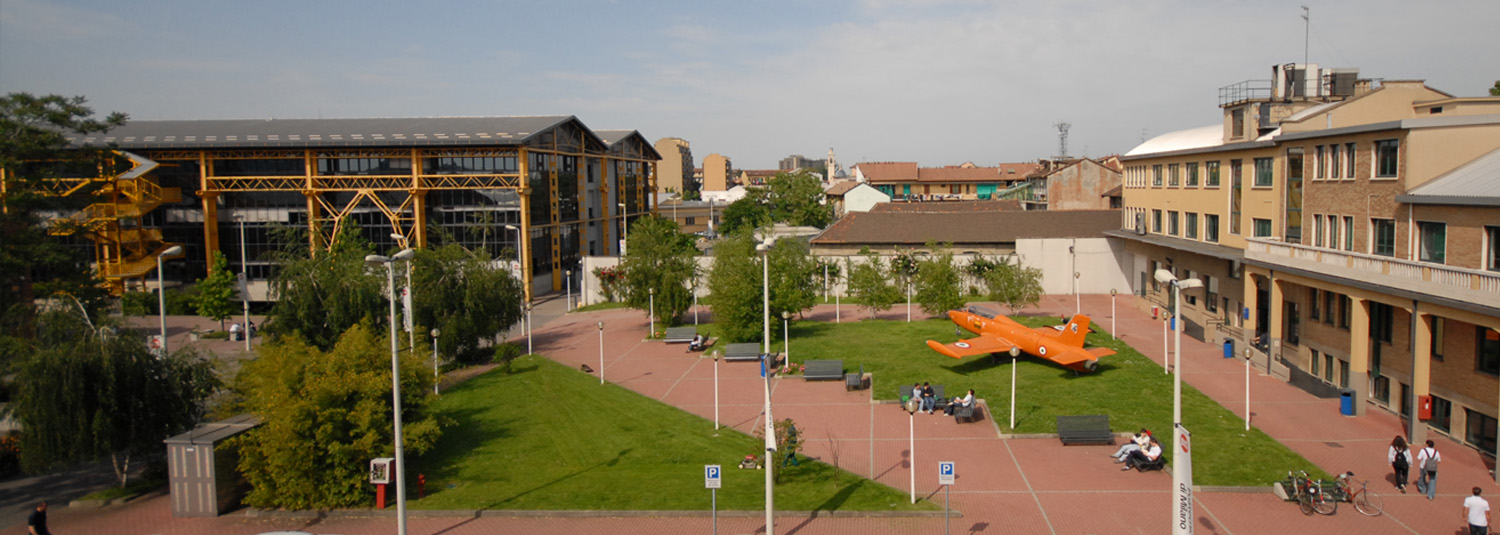Progress meetings for IEA Wind Task 48 and Interreg project MegaAWE
Where: Bovisa Campus, Building B19
When: 22 June 2022, 14:00
 |
 |
| Register here. |
Welcome cocktail and visit of the Politecnico di Milano Wind Tunnel Laboratory
Where: Bovisa Campus, Building B19
When: 22 June 2022, 15.30-19.00
The closed-circuit wind tunnel has a vertical layout with two test rooms located on the opposite sides of the loop. The first one is located in the lower part of the loop and is suitable for Low Turbulence tests. The second one, bigger, is located in the upper part of the loop and is intended for civil engineering testing (the Boundary Layer Test Section). Due to this unique feature, GVPM offers the widest possible range of test arrangements and alternatives. The facility is powered by a flow generator array of 14 1.8m diameter, 100kW, fans, for a total power of 1.4 MW. The fans are organized in two rows of seven 2x2m independent cells. Independent inverters drive the fans allowing for continuous control of the rotation speed of each fan to obtain the desired wind speed in the test section.
 |
 |
 |
 |
The Low Turbulence test section is 4m wide, 3.84m high and 6m long. It is possible to perform tests in a closed test section and in an open jet and it’s typically used for aircraft, helicopters, high-speed trains, vertical and horizontal axis wind turbines, sports aerodynamics and bridge sectional models.
The large Boundary Layer Test Section is 13.84m wide x 3.84m high and is specifically designed for wind engineering tests on civil structures scaled models. The maximum wind speed is 16m/s and the turbulence index in smooth flow conditions is about 2%. The 35m long, constant section test room enables the setting up of upstream active or passive turbulence generators to simulate the atmospheric boundary layer, with turbulence intensity that can be higher than 35%. Several layouts of spires and floor roughness elements make it possible to reproduce different terrain roughness length categories in a wide range of geometric length model scales. It’s used to test aeroelastic models of long-span bridges, high and low-rise buildings, large roof structures, wind turbines and wind farms.
Social dinner
Where: Osteria del Treno, Via S. Gregorio, 46, 20124 Milano MI, Italy Changed!
When: 23 June 2022, 19.00-22.00

